This article was co-authored by Derrek Hofrichter. Derrek Hofrichter is a Self Defense Specialist and the Founder of EVKM Self Defense & Fitness in Tempe, Arizona. Derrek specializes in Krav Maga, Personal Safety, and Boxing. Derrek is a Krav Maga Third Degree Black Belt, a Senior Certified Krav Maga Instructor, and a Krav Maga Alliance Executive Board, and Training Team Member. EVKM Self Defense & Fitness was named the 2014 Krav Maga Alliance School of the Year and the 2017 Best Gym/Workout Studio in Phoenix. Derrek was named as one of the top 30 Health and Fitness Leaders in Arizona under the age of 40 by The Arizona Republic and azcentral.com in 2018. He also holds a BA in Government Public Policy from Patrick Henry College.
There are 10 references cited in this article, which can be found at the bottom of the page.
wikiHow marks an article as reader-approved once it receives enough positive feedback. This article has 16 testimonials from our readers, earning it our reader-approved status.
This article has been viewed 660,944 times.
Karate is an ancient martial art built around self-defense that originates from Japan and China. It has become extremely popular worldwide, and has many variations. Understanding and practicing basic Karate can be achieved by learning the terms and techniques employed in this martial art.
Steps
Understanding Different Styles of Karate
-
1Know the styles of Karate. This martial art has its roots in China, but was largely developed in Okinawa, Japan in the 1600’s as a method for self-defence due to weapons being outlawed. Karate can be translated to “empty hand.” There are many styles of Karate from traditional, to modern, western styles known usually as American Freestyle Karate, and Full-Contact Karate (Sport Karate), but many of the basic techniques are the same. Some of the more popular styles are:
- ”Shotokan” is considered the first style of modern Karate (created by Gichin Funakoshi. Practitioners use steady, powerful movements and center themselves in all stances.
- ”Goju-Ryu” is a style that incorporates Chinese Kempo techniques and incorporates hard linear moves and soft circular moves that combine like yin yang. Movements are generally slower with a focus on breath.
-
2Understand the elements of Karate. Training in Karate generally involves four aspects, or fundamentals. These fundamentals are the different forms of movements that make up combinations and techniques practiced in Karate.[1]
- Kihon (Basic techniques)
- Kata (Form or pattern)
- Bunkai (Study of techniques encoded in kata or "kata application")
- Kumite (Free Sparring).
Advertisement -
3Understand how Karate differs from other martial arts. People often confuse different styles of martial arts, and interchange the names of these martial arts. It can be easy to confuse Karate with other martial arts, especially because so many arts employ similar techniques.
- Karate focuses on striking moves with and on open-handed techniques. Karate combinations involve the use of punches, kicking, knee, and elbow strikes.
- Other martial arts involve different fighting techniques and the use of weapons. Aikido focuses on evasion, joint locks, joint breaks, throws and controls. Judo focuses on throws and some grappling while taking your opponent to the ground. Kung Fu is a Chinese martial art which has various styles that are inspired by animal movements, or by Chinese philosophies, and work to improve muscle and cardiovascular fitness.
- While several martial arts use a ranking system depicted by a belt or sash, Karate has a specific system of colored belts. White represents the beginner with black representing an advanced level.[2]
Learning the Basic Fundamentals of Karate
-
1Understand kihon. Kihon translates to “basic techniques”, and is the foundation on which Karate is built. In kihon, you learn the Karate way of punching, blocking, kicking and movement.[3]
- Often you will do drills for your Sensei that may seem dull and boring, however, these blocks, punches, and kicks are vital to being able to perform Karate proficiently.
- The basics include blocks, strikes, kicks, and different stances.[4] Students will practice these basic techniques repeatedly so they become ingrained in the body and mind.
-
2Develop kata. Kata translates to “forms” and builds upon the basic techniques you have learned. With kata, you learn to combine the basic techniques in a flowing movement.[5]
- Each kata is built around a different angle so you can counter against punches and kicks that might be directed at your head, torso, or legs.[6]
- Kata is a way for teachers to pass along knowledge of techniques used in Karate. As a student, you will learn to perform a series of blocks, strikes, throws, movements, and kicks together with kata.
-
3Practice bunkai. Bunkai translates to “analysis” or “disassembly”, and involves working with others to understand the real world application of a kata.[7]
- In bunkai, you analyze every movement in a given kata and develop possible applications in real combat situations. Bunkai is a transition step to kumite.
- The concept of bunkai can be a little hard to understand because it involves you using kata to “fight” and “defend” yourself against an opponent that isn’t there. Think of it like using ballet steps being combined into a single choreographed dance which tells a story.
-
4Learn kumite. Kumite means sparring, and allows students to practice the techniques learned in Karate against one another, and oftentimes in tournaments.[8]
- In kumite, you learn to apply kihon and bunkai in a controlled environment. Kumite is one step closer to real combat, in that two practitioners will attempt to perform moves on each other.
- Kumite is sometimes performed in turns, or in Du Kumite which is another step towards free fighting with a points system sometimes applied to certain attacks.
Understanding Basic Movements
-
1Know how to perform basic punches. Karate punches use a straight punch technique with a twist of the wrist near the point of impact.
- Always hit with your first two knuckles, and make sure that your elbow is not locked, because you may overextend it and get hurt.
- Pull the fist that isn't punching back to your waist as you punch. This is called Hikite and if timed correctly, your punch will be stronger and sharper (push, pull effect).
- Incorporate kiai. Kiai is broken down into Ki, meaning energy, and Ai, meaning join. It is the sound you often hear when someone makes an attacking movement such as a punch. The purpose of kiai to release your stored energy, creating a greater impact on you attack.[9]
-
2Understand the basic blocks. Because Karate is used primarily as self-defence and not offence, there are a number of basic blocking techniques that you will learn in order to defend yourself in any situation.
- Upper rising block (Jodan Age Uke)
- Middle block ("Chudan Age Uke)
- Downward block (Gedan Age Uke)
-
3Perform basic kicks. Though Karate means “open hand” and is primarily used as self-defense, kicks are used to for a number of reasons like keeping distance between you and your attacker, or as alternative option when your upper body may be unable to perform a move due to having to block or deflect an attack.[10]
- Front kick (Mae Geri), hit with the ball of the foot
- Side kick (Yoko Geri), hit with the blade of your foot, toes pointing down
- Roundhouse kick (Mawashi Geri), hit with the ball of the foot, curl your toes up and try to turn your foot sideways
- Hook kick (Ura Mawashi Geri), reverse roundhouse kick.
- Back kick (Ushiro Geri) this is a kick behind you, make sure you look where you're kicking and hit with the heel
Expert Q&A
Did you know you can get expert answers for this article?
Unlock expert answers by supporting wikiHow
-
QuestionWhat are the basic moves in karate?
 Derrek HofrichterDerrek Hofrichter is a Self Defense Specialist and the Founder of EVKM Self Defense & Fitness in Tempe, Arizona. Derrek specializes in Krav Maga, Personal Safety, and Boxing. Derrek is a Krav Maga Third Degree Black Belt, a Senior Certified Krav Maga Instructor, and a Krav Maga Alliance Executive Board, and Training Team Member. EVKM Self Defense & Fitness was named the 2014 Krav Maga Alliance School of the Year and the 2017 Best Gym/Workout Studio in Phoenix. Derrek was named as one of the top 30 Health and Fitness Leaders in Arizona under the age of 40 by The Arizona Republic and azcentral.com in 2018. He also holds a BA in Government Public Policy from Patrick Henry College.
Derrek HofrichterDerrek Hofrichter is a Self Defense Specialist and the Founder of EVKM Self Defense & Fitness in Tempe, Arizona. Derrek specializes in Krav Maga, Personal Safety, and Boxing. Derrek is a Krav Maga Third Degree Black Belt, a Senior Certified Krav Maga Instructor, and a Krav Maga Alliance Executive Board, and Training Team Member. EVKM Self Defense & Fitness was named the 2014 Krav Maga Alliance School of the Year and the 2017 Best Gym/Workout Studio in Phoenix. Derrek was named as one of the top 30 Health and Fitness Leaders in Arizona under the age of 40 by The Arizona Republic and azcentral.com in 2018. He also holds a BA in Government Public Policy from Patrick Henry College.
Self Defense Specialist
Warnings
- Don't hit anyone without permission. It is not only impolite, but dangerous, as someone who is unprepared is much more likely to be injured when struck.⧼thumbs_response⧽
- If you have any physical complications, consult your doctor before beginning karate classes.⧼thumbs_response⧽
- Don't fool around. You’re only wasting your time and other people's time, and you may end up hurting yourself or someone else. Martial arts techniques are designed to damage people, and should not be handled carelessly.⧼thumbs_response⧽
References
- ↑ http://www.streetdirectory.com/travel_guide/39885/martial_arts/kihon_kata_and_kumite_the_three_ks_of_karate.html
- ↑ http://www.karatebyjesse.com/karate-belt-colors-meaning/
- ↑ http://www.traditional-karate.com/karate/kihon/
- ↑ Derrek Hofrichter. Self Defense Specialist. Expert Interview. 26 January 2021.
- ↑ https://traditional-karate.com/karate-do/kata-forms/
- ↑ Derrek Hofrichter. Self Defense Specialist. Expert Interview. 26 January 2021.
- ↑ http://www.karatebyjesse.com/bunkai-blueprint-kata-framework/
- ↑ https://traditional-karate.com/karate-do/kumite-sparring/
- ↑ http://www.karatebyjesse.com/kiai-scream-meaning-purpose-why/
About This Article
To understand basic karate, start by learning the different styles, including American Freestyle, Shotokan, Sport, and Goju-Ryu. Then, learn the basic movements, also called “kihon,” which include punching, blocking, kicking, and movement. Once you’ve mastered kihon, you can move on to other basics, like form, also called “kata,” sparring, called “kumite,” and real-world applications of karate, called “bunkai.” Scroll down for information on performing the basic karate movements!
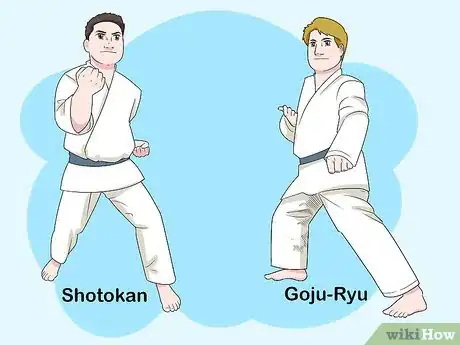
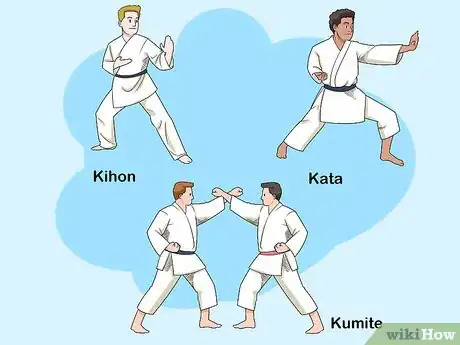
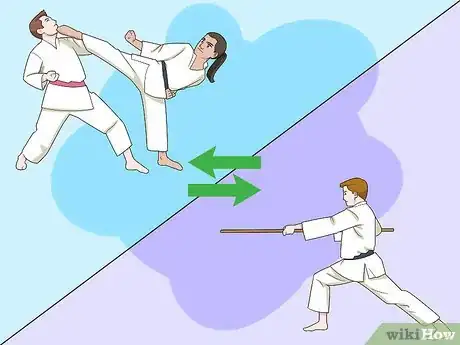


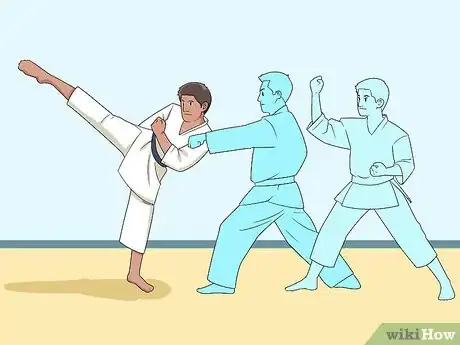
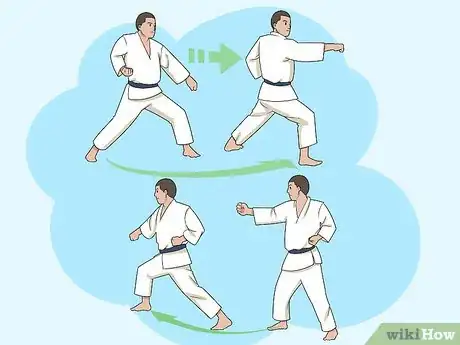
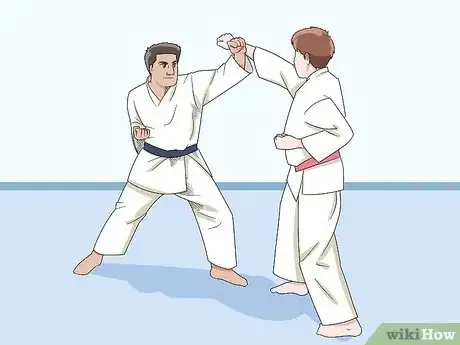
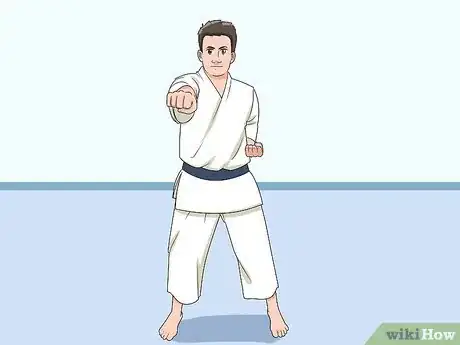
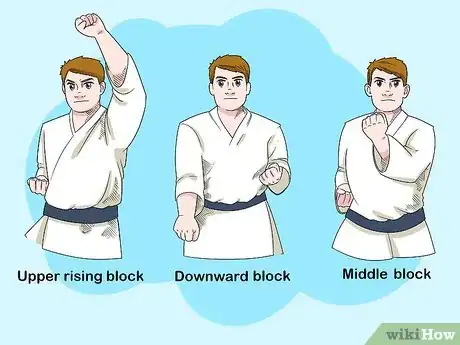
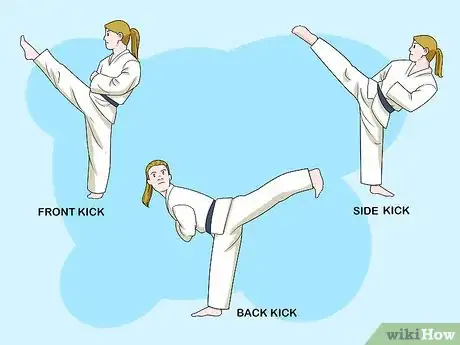
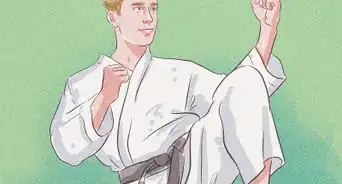
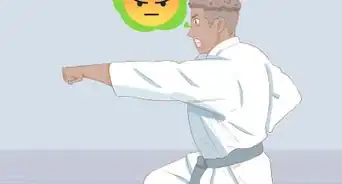
-Step-15-Version-2.webp)
-Step-7.webp)
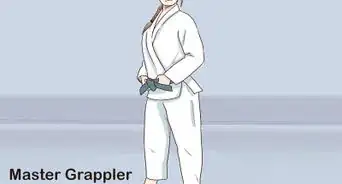
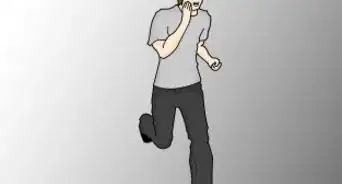
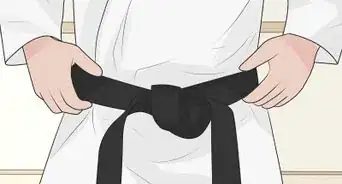
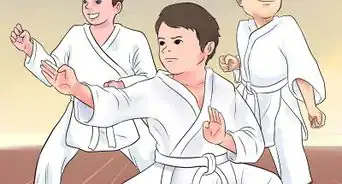
-Step-7-Version-2.webp)
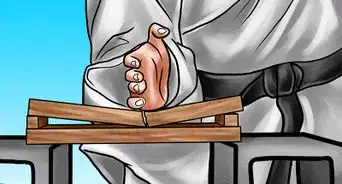
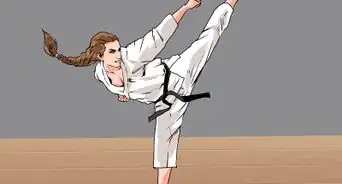
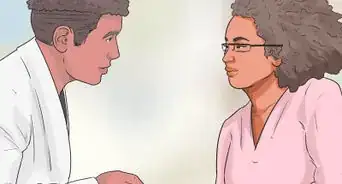
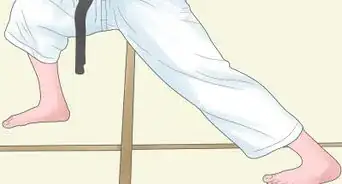









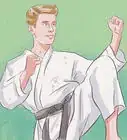
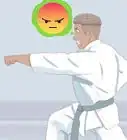
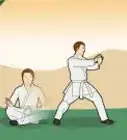
-Step-15-Version-2.webp)


































